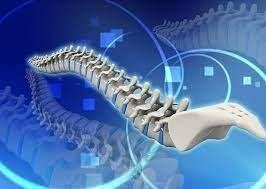.jpg)
Introduction
Keyhole surgery is for diagnosing and curing problems throughout the body by surgeons. They employ laparoscopic equipment to observe the inside of the body and perform treatments, which they implant through small incisions. There are two ways: interlaminar or transforaminal: the fewer the incisions, the less scarring, and the faster the healing.
What is a Keyhole Surgery?
Keyhole Spine Surgery is an advanced spine surgery performed with fewer incisions, resulting in minor tissue damage and a speedier post-surgical recovery. To execute this minimally invasive surgery, the neurologists employ Tubular Retractors; unique surgical equipment put through tiny incisions to reach the spinal column. It creates a tunnel-like entrance that goes to the area that you need to operate. In comparison to open surgery, the doctor will use the tubular retractor to keep the muscles open during the process, resulting in less blood loss and damage to the bones, ligaments, and muscles. Max Healthcare has the best neurologists in India who have Experienced in heart surgery.
Types of Keyhole Surgery
The best neurologist in India has significant Experience with various minimally invasive keyhole surgery techniques, depending on the condition.
Brain port surgery.
Endoscopic trans-ventricular route.
Gravity-assisted surgery
Trans-tentorial surgery.
Mini-pterional surgery.
Retromastoid surgery.
Supraorbital eyebrow surgery.
How do Surgeons perform Keyhole Surgery?
While arthroscopy, like other minimally invasive surgery, is beneficial for the patient in terms of recovery time, it necessitates specialized equipment and surgical tools. Anesthetic is applied. They insert an arthroscope through a small incision the size of a keyhole.
Advantages of Keyhole Surgery
During keyhole surgery, it is unnecessary to remove the entire muscle, which saves time and money. As a result, there is minor bleeding, and the energy loses its function.
In the postoperative phase, the patient is in less pain and requires less pain medication.
The patient can resume normal activities sooner.
What are the Risk Factors of Keyhole Surgery?
Arthroscopy, like other types of keyhole surgery, has fewer risks than regular operations. The following are some of the hazards:
Infections
Excessive Swelling
Thrombosis of the deep veins (blood clots that form in a vein)
Nerve and blood vessel damage
Breakage of instruments throughout the procedure
It is important to note that problems occur in less than 1% of all arthroscopic procedures, and if they do, it is possible to treat them effectively.
What is the recovery process of Keyhole Surgery?
Due to the gas used by the team to expand the abdomen during the procedure, some persons who have keyhole surgery on the stomach may have pain in the shoulder or back. The soreness will reduce in a few days.
It is typical to have soreness at the incision sites and exhaustion for a few days. If the procedure included inserting a tube down the throat, the patient might experience a sore throat. A warm saltwater gargle may be beneficial.
Conclusion
A person can resume their normal activities depending on the type of operation and the therapy problem. If a patient suffers unusual pain following surgery or any soreness or exhaustion persists after a few days, they should contact their surgeon. If you want medical assistance, you can get the best neurologist in India.